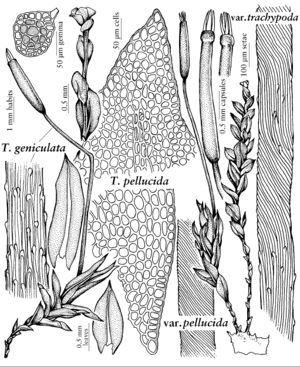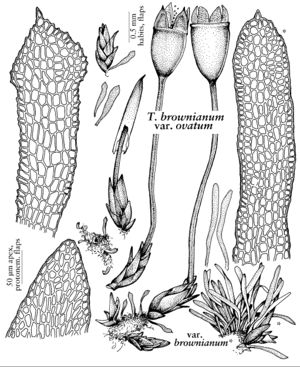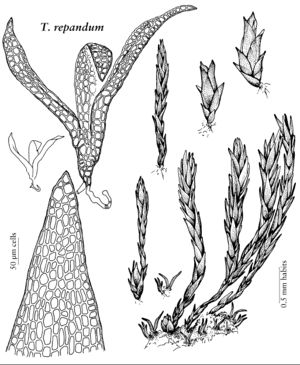FNA>Volume Importer |
FNA>Volume Importer |
(No difference)
| |
Revision as of 21:50, 16 December 2019
Plants minute and budlike or merely small, forming dense turfs or scattered patches; protonema producing chlorophyllose, perpendicular protonematal flaps, which are persistent or disappear after the development of the gametophores. Stems erect, to 1.5 cm. Leaves ovate or lanceolate, erect, three-ranked and appressed or spreading, costate or ecostate, cells smooth, rounded-hexagonal or oblong-rhomboid, basal cells elongate. Sexual condition autoicous; archegonia and antheridia on short stems at the plant base. Seta straight or flexuose, smooth or papillose. Capsule exserted, single, cylindric, ovate or shortly oblong-cylindric; peristome of four, single, unsegmented, narrowly triangular, multicellular teeth; annulus absent. Calyptra mitrate, smooth or plicate, naked. Spores green to yellowish, 10–16 µm, spheric, smooth or finely papillose.
Distribution
Circumboreal, disjunct to the Southern Hemisphere.
Discussion
Genera 2, species 4 (2 genera, 4 species in the flora).
Selected References
None.
Lower Taxa
Illustrations
Key
| 1 | Plants with conspicuous stems to 1.5 cm, forming dense turfs or scattered patches, leaves costate, protonematal flaps not persistent, stalked asexual structures often present. | Tetraphis |
| 1 | Plants minute, bud-like, stems less than 0.05 cm, leaves weakly costate in distal leaves or costa absent, protonematal flaps persistent and usually present, specialized asexual structures absent. | Tetrodontium |


